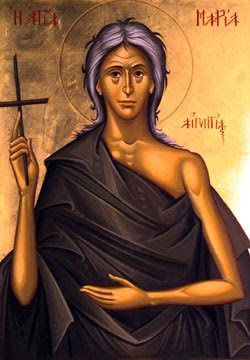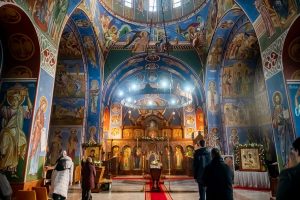I don’t know that I’ve ever recommended a comic before, but this one has definitely earned it. Read it here.
The True Life Expectancy in the United States
Is 17. May God have mercy on us.
How Can You Discuss Liberalism in America Today?
Earlier today, Audible recommended to me through its algorithms the book Why Liberalism Failed, by Patrick Deneen. I’d never heard of the book or its author before, so I did what I usually do when Audible recommends a book to me: I read the one-star reviews. Reviewers’ biggest issue with the book, it seemed, revolved around the definition of liberalism. Just from reading the one-star reviews, it is clear that Deneen’s critique of liberalism would include modern American Republicans and self-styled “conservatives,” who are of course squarely within the Lockean school of liberalism. Yet these reviewers clearly did not consider Republicans/”conservatives” as a subset within liberalism, but as somehow opposed to liberalism. The fact that these reviewers are wrong is immaterial–they are expressing the common understanding. In light of this, how does one actually go about discussing liberalism in America today? In a two party system where both parties draw their ideology from liberalism, the larger ideology of liberalism has largely become invisible. Is there a way to discuss liberalism in America today, or has it become so ingrained, so taken for granted, that it has become impossible to discuss, critique, or evaluate?
On “Making a Difference”
Not long ago, I read somewhere of a conversation between the author and his brother regarding monks. I’ve tried every search term I can think of to find it, but no luck so far. As I recall, the brother told the author that he admired the acetic discipline of the monks, but asked what difference all that prayer and fasting did if there was no one to see it or be inspired by it.
There seems to be an idea that virtue only “makes a difference” if it is seen. If you live a life of virtue, and it is seen by many, and causes some of them to live lives of virtue, that has value. But (in this view) if you live a life of virtue as a hermit, unseen by the world, that life of virtue has less value somehow. This idea is simply not true, as the example of St. Mary of Egypt should illustrate.
The life of St. Mary should also illustrate that God can take a life of virtue lived in complete anonymity, and not only make it public, but inspire millions with it if He so chooses.
This mistaken idea is probably particularly dangerous to those of us that have blogs or social media accounts. These mediums can provide us with a seductive possibility of “making an impact” by sounding a trumpet when we give alms or do other things that we should be doing.
Back when I had a Facebook account, there was a time when I got tired of arguing with people on every post I made. So I started posting pictures of cathedrals instead of words. People will argue with words, even when they are crafted with more skill than I posses. Yet beauty bypasses the level of argument to strike directly at the level of experiential knowledge. Unfortunately, when we seek to spread virtue by sounding trumpets before us on blogs or social media, we are detracting from the beauty inherent in virtue, and thus making virtue less attractive to those around us. On the other hand, if we can let go of the idea of “making a difference” and focus on our own repentance, on building virtue in our lives, the beauty of that virtue will shine out through us.
Writing helps me to organize my thoughts, but I know better than to see this blog as my avenue to making a difference. Any difference made through this blog will only be as a direct result of my own repentance.
5 Years
Once again, the blog has been neglected for months. The main reason for this is the amount of time and energy that I’ve had to focus on the final capstone project for a degree I’ve been steadily chipping away at the requirements of for the past eight years. The final project, the culmination of both an intense 16-week class and the whole 8-year journey, has been submitted and now I have only to await a grade. Hopefully, once I catch up some on the many projects around the house that have also been put off due to the class, I will be able to write more. But tonight it is raining, so I have an excuse for writing rather than working on one of my many projects waiting outside.
I didn’t even write the week of my birthday, which is very unusual. This year my birthday came and went with much less reflection on life and goals than typical. Of course, that week an important assignment was due for my capstone project, so my focus was not on the birthday. Now that I have time to think and look back, it amazes me how much has changed from my birthday five years ago to my birthday this year.
On my birthday in 2015, I had not yet met Courtney. Now, not only are we married, but we have three children and a fourth on the way. In 2015, I had never yet stepped foot in an Orthodox Church, yet today I am the father of cradle Orthodox children. In 2015, I rented a room in a 2-bedroom condo. Since then I bought a house, sold it at a profit, and bought another house with more land. In 2015, I had never killed, gutted, skinned, or butchered a deer. Now I am asked to teach others these skills. In 2015, the management of the condos where I rented a room prevented me from growing a few vegetables. This year, we have a separate garden just for potatoes and onions.
In 2015, I was almost ready to give up on having a family. Five years made an incredible difference. Over the next five years, I hope to build further on the foundation established over the past five. I hope to move us closer and closer to self-sufficiency. I still need to get much better at fishing, to establish more gardens, and possibly move again to a larger property where we can have some farm animals, along with countless other projects. I hope to document this journey here.
Hopefully, the next update in this journey will be soon.
Finally! A Footwear Solution for Women and Children
The challenge when it comes to men’s footwear is deciding which of the many excellent Made in the USA boots to buy. The challenge for women’s and children’s footwear is the opposite. While a few of the companies that makes men’s boots also make some women’s boots, with the notable exception of Red Wing’s Clara (which is very pricey), these are simply sized down men’s boots, and not at all feminine. The options that are actually made for women (excepting boots for equestrian purposes) tend to be shoddily made of pleather or cloth. And Courtney likes to wear flats, which seem to be ubiquitously made out of cheap fabric.
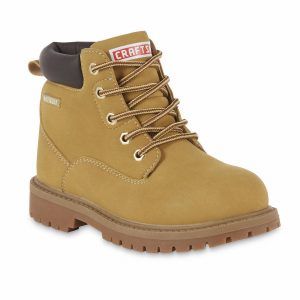
Boys boots are no better. When Elgin was little, he would refuse to wear shoes. We finally got him to wear shoes when we bought a pair of work boots for him at Sears. They looked good at first, but were pleather and he managed to wear them out before outgrowing them despite how fast he was growing. He went through a few more pairs of those boots, because he would actually wear them, and we eventually found that he would wear rubber boots (or as he calls them “poop boots”) as well. And so, for the last few years, Courtney and Elgin have worn footwear that rather quickly deteriorated. Edna fared better–she was passed down a pair of crocs that seemed to wear quite well, and she wore them until she grew out of them. Crocs seems like a good play shoe for her, but as she’s gotten older I’ve become less comfortable with her wearing them for church on Sunday, or on other more “dressy” occasions.
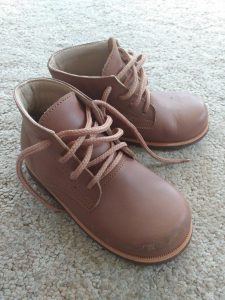
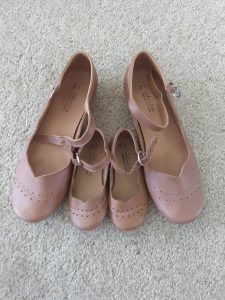
Well, it seems that we’ve finally found a solution. Courtney came across a company called Adelisa & Co. that sells women’s and children’s shoes that are handmade in Nicaragua out of genuine leather. While I would prefer to buy Made in the USA, handmade in Nicaragua is much better in my opinion than machine made in China. The leather is relatively thin, which makes the shoes and boots softer. Edna wore her shoes to bed the first night or two after she got them. Elgin has been wearing his boots every day, and they have not seemed to need a breaking in like thicker leather boots typically do.


If you’ve been looking for a better solution for women’s and children’s footwear, give Adelisa & Co. a try. Prices are reasonable, with Courtney’s shoes at $65, Edna’s at $45, and Elgin’s boots at $55. They have a variety of other styles available as well, including a simple Oxford that looks equally good on boys and girls.
Major Purchase: Sausage Stuffer / Cheese Press
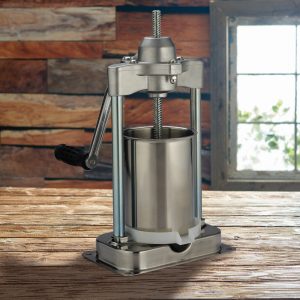
I took advantage of a Mother’s Day sale to buy some kitchen equipment for Courtney. Courtney started making homemade cheese not long after Elgin was born, but has been limited by lack of a cheese press, which is necessary for certain cheeses. Because of the lack of a press, Courtney has been mostly limited to mozzarella. Mozzarella is delicious, but in the interest of expanding varieties I’ve been looking for a good, quality cheese press for some time now. Most cheese presses on the market are unable to be used for anything else, large, clunky, not particularly good looking, and not cheap.
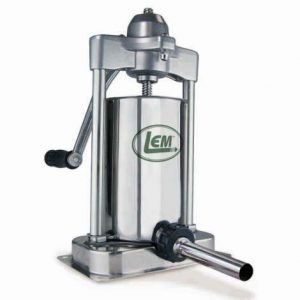
Eventually, I settled on a cheese press made by LEM, which can either be purchased as a complete unit, or as an adapter for a 5 lb sausage stuffer. Originally, I was planning on buying the complete unit, but as we’ve moved further into self-sufficiency, we’ve started to have large amounts of ground venison on hand. Also, over the past year, Courtney has experimented with making homemade bologna, shaping it in a bread pan rather than a sausage casing. During Lent, she even made some homemade vegetarian hot dogs, which she rolled and cut in order to shape. So, with the Mother’s Day sale, I decided to buy the 5lb sausage stuffer and the cheese press adapter. Total cost with shipping was $275. Hopefully I’ll be able to post some results from its use soon.
Resource Update + Teasers
I’ve added some links under the resources page, and added more categories to keep everything streamlined. Blogs are now divided into categories, mirroring those for books except for the elimination of the fiction worth reading category and the addition of a technology category. The new technology category has 2 new resources, Low-Tech Magazine and No Tech Magazine. These are related blogs/webmagazines that deal with some of the problems of modern technology and low-tech solutions to common problems–interesting and inspiring reading.
I’ve also added a podcast page to the resources. I’m not a huge podcast guy, and the only podcasts I listen to are about Orthodoxy, so I didn’t bother adding categories for podcasts. I’ve included three excellent resources here. The first is Holy Archangels Orthodox Foundation, which host a wealth of talks, lectures, and homilies by Metropolitan +JONAH. I recently finished the series on contemplative prayer, and learned a lot in the process. The other two, The Arena and From the Amvon, feature homilies by Fr. Josiah Trenham and Fr. John Whiteford respectively.
Now for the teasers: 3 potential new resources! I recently ordered shoes for my wife and oldest daughter, and boots for my son, from a new company I’ve run across. For awhile now I’ve been frustrated, because while its fairly easy to find made in the USA from genuine full-grain US leather boots for men, I’ve found nothing similar for women or children–until now. I’m waiting to inspect the product, but I may have found the solution to cheap, shoddy shoes for women and children.
Second, I’ve been in touch with a friend from high school who has an extensive background in vegetable farming, including intensive production. He is starting a garden mentorship program in which he helps you with all things garden. Layout, varieties, pest problems, all this and more! Unfortunately, the program does not have any current openings, but I have asked him to let me post here when new openings are available, which will likely be this fall or next spring. You, my readers, will be the first to know when the program is available.
Finally, I’ve been in touch with a different friend from high school, who is in the beginning stages of a business selling fabric. If you’re like us, you buy fabric for kid’s clothes at least twice a year, and I always try to get enough for Courtney to make one or two new dresses for herself every year too. My friend is working on getting some USA made natural fibers, and I’ll post a write-up here when that’s a reality. In the meantime, she does have imported flannel available, so If you are further north than us here in Wisconsin, or want to start your fall outfits early, message me and I’ll get you the information.
Project and Purchase Roundup, Last 2/3 of April 2020
Shortly after we moved into our new house, we found that the roof in out sunroom was leaking. It was pretty minor at first, just a few drips from where the top of the wall joins the ceiling. I figured it was ice damming with the melting snow. I cleaned off the roof, which seemed to stop the problem and didn’t think about it until some time later when it rained, and it again leaked. So I bought some roof patch and patched some areas that seemed like likely culprits (the sunroom is only 6’x18′, so the roof is pretty small). Next rainfall showed that the patching was no avail. This continued a few more times, with me trying something and it not working, until I finally just laid a steel roof over it. No more leaks. That cost me about $700 in materials.
I also had to buy a Skil saw to complete the roofing project, as I only had a small and weak battery powered one. I got a decently made 7 1/4 corded saw for about $50. I’ve already used this saw for other projects, and I expect to get a lot of use out of it for many years to come.
I threw together a quick outdoor compost bin, as the worm bin needed a break from daily dumping for a while to let the worms get established. I think the materials cost me about $60, with the majority of that being hardware cloth. It turned out that I probably didn’t need to build it yet, as about the time I got it done the chickens got to a size where they began to go through food scraps much more quickly. I also put up another set of robe/towel hooks in the bathroom, and replaced a failed toilet paper holder.
When I put the steel roof on the sunroom, I had to special order sidewall and endwall flashing, as the roof over the sunroom is a hip roof that joins a higher wall. The flashing came in a protective box made of several 12′ long 2x6s banded together. Not one to let good lumber go to waste, I used these, together with a few pieces of scrap laminate countertop that I’ve been holding on to for a while, to build a rough but usable temporary kitchen counter setup. There was no kitchen counter when we moved in, and only 2 double-door steel upper wall cabinets. We’ve been using a folding plastic table as our countertop, but because it was several inches lower than a typical countertop, it hurt Courtney’s back to do too much cooking, canning, or baking at one time. The new setup is definitely “rustic” in appearance, but basically doubles her available work space and undercounter storage space while actually making the room feel bigger and more open.
Stay tuned for the the next project and purchase update, which will likely include the installation of a garden.
Ian Brewer: My Story
Note: This guest post was written by Ian Brewer, a friend of mine and fellow parishioner at Saint Ignatius of Antioch Orthodox Christian Church in Fitchburg, Wisconsin.
In the summer of 2010, I did the same thing I had done every summer I could remember. I spent a month at my grandma’s house in Western Pennsylvania. I helped her around the house, mowed the lawn, caught frogs, and attended her local Seventh-Day Adventist church every Sabbath like I had every summer before that one. I had just graduated from my Adventist high school and this stay at my grandma’s was the first time she worried aloud that I wouldn’t be able to visit her in subsequent summers—a worry she had occasion to voice for years to come.
While I was enjoying myself in PA, several thousand of my soon-to-be classmates were undergoing orientation for their first semester at USC Columbia. Because of my traditional visit to my grandma, I elected to wait for the last orientation date of the summer.
Like I said, I had just graduated from an Adventist high school. This was after attending an Adventist grade school since kindergarten. I was a Pathfinder (an Adventist Boy Scout, in simple terms), I went to Adventist summer camp, I attended large conferences of SDAs in the Carolinas, and I had been to more “Daniel and Revelation” seminars than I care to count. Suffice it to say, I was deeply Adventist. My friends, family, teachers, and a vast majority even of my acquaintances were all Adventist. I was fourth-generation Adventist on both sides of my family. For a church founded in 1863, that’s a lot (though, some readers will be understandably unimpressed by this number).
Most of my friends were preparing to attend Adventist universities, with the bulk of them going to Southern Adventist University and others enrolling at Andrews University. Some readers will know that Adventist universities are extremely expensive. My parents had just spent the last thirteen years paying tuition to SDA schools and, for most of that time, for all their three children—no small sacrifice. They had done their part. College was up to me. I elected to pursue a less costly option.
Signing up for classes for my first semester of university was mostly an exercise in fulfilling generic degree requirements. Since I had waited so late into the summer to sign up, most classes were full. I checked for classes in the Religious Studies department and found what appeared to be the perfect class for me, so learned in theology. I signed up for Religion 110: Intro to World Religions, a Tuesday-Thursday class meeting at 2:00 PM (this fulfilled an important criterion of mine: to never wake up early). The class was taught by Professor James Cutsinger, whom I would find out was an Orthodox Christian.
Religion 110 was an experience unlike any other for me. Every week, I read about the great traditions of the world and the stories of their saints. I listened to lectures delivered by a man who took them seriously on their own terms. This was the first time I had heard other traditions than my own spoken of in a way other than to cover their most basic elements and to explain why those basics were clearly incorrect. A few weeks into the semester, I declared my minor as Religious Studies.
Truly, I ended up minoring in James. I took every class from him that I could. One of these classes was Religion 332: Christian Theology. My brother and I took this class together. Knowing Orthodoxy best and having no qualms about professing Orthodoxy to be the fullness of the Christian faith, James taught Orthodox theology in his classroom. It soon became clear to me that I had never heard theology before. Rather, I had been taught an extensive list of doctrines and some snappy proof-texts to back them up. I found theology far more engaging. I learned about the heresies that prompted the seven Ecumenical Councils, the relationship of humanity and divinity, the nature of inspiration and revelation, creation ex nihilo, theodicy, theories of atonement, and eschatology among many topics.
During one lecture, probably regarding beliefs about the End Times, my brother and I had the opportunity to discuss and explain our beliefs as Adventists to James and the rest of the class. My family was very proud of us for being unashamed of our beliefs and being open about them. This scene would be curiously mirrored a few years later.
At the end of that semester, I was an Adventist. However, I was now an Adventist whose eyebrows often shot up or furrowed during sermons I heard from my home church’s pulpit. You see, I began to realize that my pastors knew very little theology, even less about church history, and were prone to making misleading statements or declaring plain untruths. I didn’t blame them; I was simply surprised that one could make it out of seminary in that state.
I don’t mean to sound superior. I am ashamed to say that I probably felt that way at the time. Certainly, I had never received that example from James. He was always attentive, kind, and polite. I may have maintained the appearance of that attitude on the outside, but I’m sure I was prideful in my heart.
I carried on in roughly that same state for a few years. I graduated from USC and left the South to pursue an MBA in Akron, OH. I stopped attending church regularly. I was dating a girl who was not a churchgoer herself at the time and my visits to my grandma were the only times that I attended an Adventist church. I still considered myself an Adventist. I kept the Sabbath, I kept the dietary rules, and my beliefs were mostly unchanged. However, something had changed. My practice of my faith felt empty and my questions went unanswered.
I remember one day at work as a graduate assistant I was particularly unbusy. I had nothing better to do—though I didn’t know how true that was at the time—and some questions began to insistently run through my mind. I started looking for answers to those questions and happened upon a Catholic website where many questions were catalogued and addressed. As it turned out, they had heard of SDAs and addressed their objections to Catholic doctrine. Since my questions were mostly broad issues with worship on Sunday, the “state of the dead,” the use of images in worship, scripture and tradition, etc., there wasn’t any divergence in their answers from what Orthodox Christians would say.
After a few days, I was convinced that I had been wrong. I won’t go into the specifics because I don’t care to argue or seek to prove anything. I am convinced that the prompting of the Holy Spirit is the only basis for a change of this kind. Not only did I believe I had been wrong, but I thought there was an extremely good chance that James had been right about everything he ever said to me and that his church could truly provide me with the best tools to take on the likeness of God. While this was great news, it was also terrifying because it meant I had to do something. I couldn’t just sit around being a non-churchgoing, nominal Adventist with some wacky ideas.
It’s very important to me that I impress upon you that my conversion was not a simple matter of discarding a set of beliefs I found to be incorrect and adopting others that I decided were correct. My relationship with James had an enormous impact on me and it wasn’t exclusively intellectual. He was a role model. He lived a life of humility while very obviously possessing a holiness I hadn’t encountered before. He was disciplined, creative, kind, and loving. He also held me to a very high standard. Knowing that Jesus instructed us to judge a tree by its fruit made it impossible to avoid speculating on what sort of tree could have produced him. When I reached that point in my life, it was natural for me to reach out to him first for guidance.
After speaking to James, a week later, on Tuesday, June 2, 2015 I dropped by the local Greek Orthodox church in downtown Akron. I had no idea if anyone would be there. Providentially, I believe, there was a parish council meeting or something like that going on at the time. A very confused secretary answered the doorbell and introduced me to Father Jerry Hall. Fr. Jerry was perplexed and taken aback by my sudden appearance, wishing to speak to him about his church, but he was very welcoming and toured the church with me for an hour or so. I came back on Sunday and accidentally sat with his family. His wife showed me the liturgy book and helped me figure out what was going on. As much as I knew about theology already, I knew next to nothing about practice.
No doubt, my catechesis was odd. I had already decided to convert before I ever stepped foot inside an Orthodox church. I began meeting one-on-one with Fr. Jerry every week on Thursday to discuss the Church and my place in it. Despite my unfamiliarity with it, the Divine Liturgy (the central service of Orthodox worship) felt like home. The music, the icons, the vestments, the candles, the incense. Everywhere I looked, touched, smelled, tasted, and heard threads connecting me to and drawing me toward Jesus Christ.
After a couple of months, I faced my next big challenge. I had to tell my family what I had decided. They came up North to visit my grandma in mid-August and stayed for a week. Not long before they arrived, I called my brother and explained to him what was going on with me and my conversion. He knew my journey best and I needed someone to stand with me when I faced my family. He understood and agreed. One night, I called my family together in my grandma’s living room and stood in front of them with my brother and explained to them that I was no longer Adventist and I intended to join the Orthodox Church. They were all surprised and confused, but beyond that their reactions varied. Thankfully, no one was angry or condemnatory toward me. My dad was quiet. My mom was inquisitive. My sister was perplexed, but unconcerned. My grandma was quietly horror-stricken.
Though I know there were some frantic how-can-you-let-this-happen conversations beyond my hearing, to everyone’s credit, they were very accepting. I was already an adult, of course, and this decision was my own, but I did everything I could to soften the blow and explain that I was not rejecting them by leaving their church. From my perspective, I was moving deeper in accordance with what they taught me in my childhood. My mom told me that she was very proud of me for the decision I made and how I handled it.
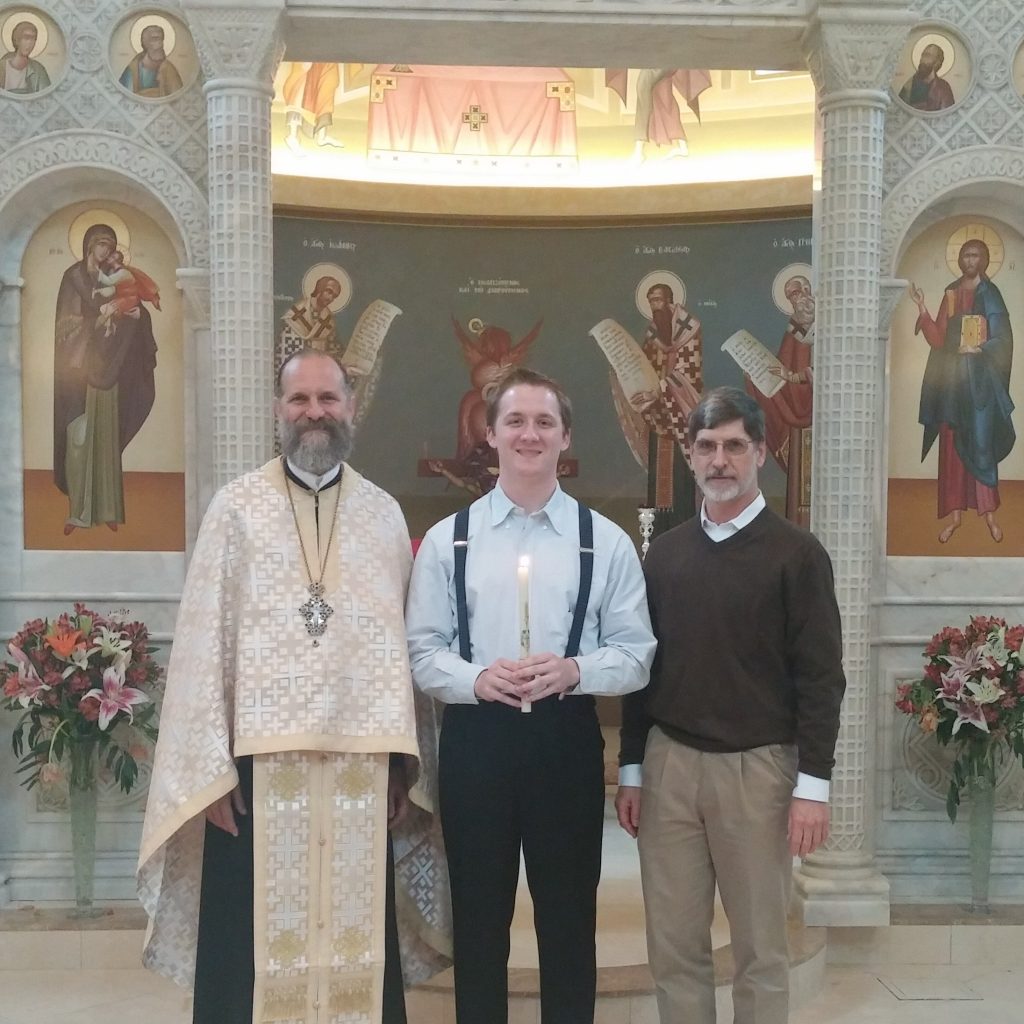
The next year, on March 20, the Sunday of Orthodoxy, I was baptized into the Orthodox Church with James as my sponsor, my godfather. I flew down to South Carolina because it was far easier for me to come to James than for him to come to me. Normally, a baptism wouldn’t be so small an affair as mine was with just my mom, dad, sister, James, and my godmother, Carol in attendance. But the church was beautiful, the service was beyond description, and I was never made to feel like an outsider by anyone. I felt brand new when I left that day.
A lot of things changed. I do not doubt that I would still have some friends now that I don’t have any longer if I hadn’t left Adventism. I have some extended family that mostly avoids the subject of religion with me. One of my relationships suffered and ultimately ended at least in part due to my dramatic change from “something weird” to “something even weirder.”
That isn’t the whole story, though. I have a rich relationship with God and His Church. I have so many people praying for me at any given moment that it’s astonishing. I have more family. I have new friends. I have old friends. My best friend in the world is Adventist and I’m convinced that there is nothing that could stop me from loving him or him from loving me. My brother was recently baptized Orthodox with me—funny enough—standing as his godfather. My family is occasionally baffled by me, but they love and respect me.
I’ve found that I’m not the only one who has changed. Many of the people I grew up with are no longer SDA. Some are near where I once was—somewhere in between. Some are atheist. Some are non-denominational. I have had conversations with many of my friends in which we shared similar stories about realizing that we didn’t feel like ourselves where we were. Not all of them have managed to find the path to being themselves, yet. I truly believe that I am more myself now than I ever have been. I expect to be even more so in the years and eternity to come.
I attended James’s funeral earlier this year after cancer ran its course through him. Many of his students were in attendance and it was uplifting amidst my grief to see around me so many lives changed by him. He was a friend, teacher, and mentor and I long for the day I can hear his voice again.
I’ll make a small attempt at advice now. Don’t ignore your questions or your desire for more. There are answers and there is fullness. I recommend Orthodoxy for both. I wouldn’t be here if I hadn’t found them.
